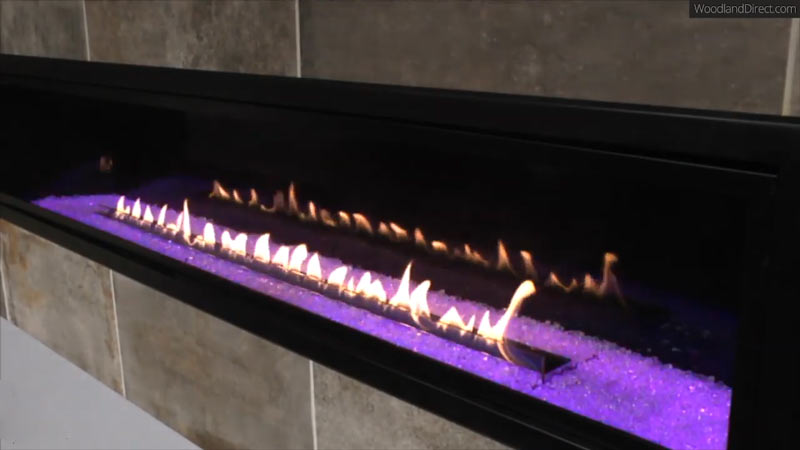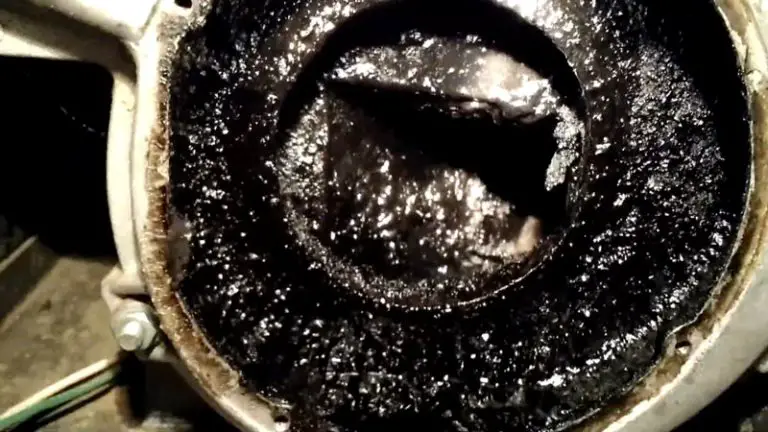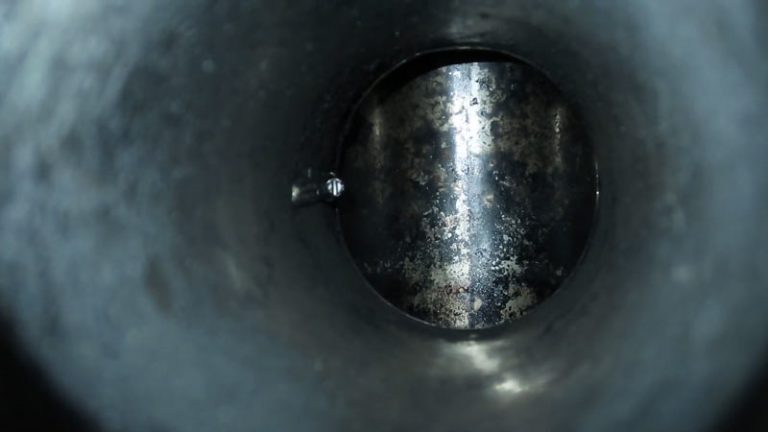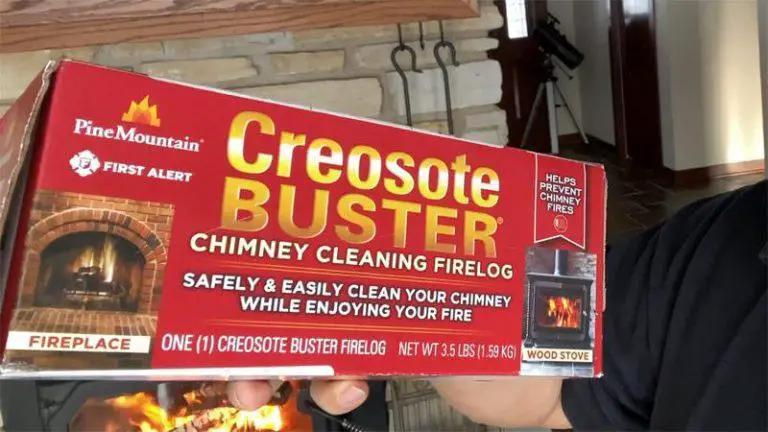Why My Gas Fireplace Flame Adjustment Not Working?

Adjusting the flame on a gas fireplace is an important aspect of ensuring that it operates safely and efficiently. The flame should be properly adjusted to the right height and color in order to burn cleanly and avoid issues such as sooting or carbon monoxide buildup.
If you are experiencing problems with your gas fireplace flame adjustment not working properly, it is important to identify the root cause and take steps to fix it. In this article, we will explore common issues with gas fireplace flame adjustment and provide steps for troubleshooting and fixing these problems.
You'll Learn About
Gas Fireplace Flame Adjustment Not Working
If you have checked the gas pressure, venting, and air shutter and still cannot resolve the issue, it may be worth considering the possibility of a faulty valve motor as you mentioned.
It is also possible that there could be an issue with the control center or with the gas supply itself. If you have ruled out all of these other potential causes and are still having difficulty with the low flame height, it may be necessary to consult with a professional technician or the manufacturer for further assistance.
It is important to ensure that your gas fireplace is operating safely and efficiently, and a trained professional will have the expertise and knowledge to diagnose and repair any issues you may be experiencing.
Why Does My Gas Fireplace Have a Small Flame?
A small flame in a gas fireplace can be caused by a variety of factors, some of which are easy to fix while others may require professional assistance. Below are 5 common causes of a small flame in a gas fireplace.
Clogged Burner Ports
One of the most common causes of a small flame is clogged burner ports. Burner ports are tiny openings in the gas burner where the gas is released and ignited. Over time, dust, debris, and other particles can clog these ports, restricting the flow of gas and causing the flame to be smaller.
This can easily be fixed by cleaning the burner and ports using a small brush or a can of compressed air.
Insufficient Gas Pressure
Another reason for a small flame could be insufficient gas pressure. If the gas pressure is not set to the correct level, the flame will be smaller than it should be. To resolve this issue, a gas technician should be called to adjust the gas pressure to the correct level.
Malfunctioning Thermocouple
The thermocouple is a safety device that detects when the flame is present and allows gas to flow. If the thermocouple is not working properly, it may not detect the flame and will shut off the gas supply, causing a small flame. A gas technician should be called to diagnose and repair any issues with the thermocouple.
Dirty Pilot Light
A dirty pilot light can also cause a small flame. The pilot light provides the initial spark to ignite the gas, and if it is dirty or clogged, the flame will be smaller. Cleaning the pilot light and adjusting the flame height can easily fix this issue. It also make a pilot light loud.
Obstructed Air Supply
The flame in a gas fireplace needs a constant supply of air to burn correctly. If the air supply is obstructed, the flame will be smaller. This can be caused by a variety of things, including debris in the chimney, a dirty air intake filter, or a clogged air duct.
Cleaning the chimney, changing the air filter, and clearing any obstructions from the air duct can help resolve this issue.
A small flame in a gas fireplace can be caused by a variety of factors, ranging from simply clogged burner ports to more complex issues with the thermocouple or air supply. If the issue is not easily resolved, it is important to call a professional gas technician to diagnose and repair the problem. Regular maintenance, including cleaning the fireplace, can help prevent small flame issues and ensure that your fireplace is operating safely and efficiently.
Common Issues With Gas Fireplace Flame Adjustment
Low Flame Height
One of the most common issues with gas fireplace flame adjustment is low flame height. This can occur for a variety of reasons, such as low gas pressure, venting issues, or problems with the air shutter.
Color of the Flame
Another common issue is the color of the flame, which can range from blue to orange to red depending on the fuel/air mix. A blue flame typically indicates a fast-burning flame with excess air, while an orange or red flame may indicate a slower-burning flame with too little air.
Difficulty Adjusting the Flame
Difficulty adjusting the flame can also be a problem, which can be caused by issues with the valve motor or the control center. Overall, any of these issues can lead to an inefficient or potentially dangerous fireplace, and it is important to address them in order to ensure that the fireplace is operating properly.
Potential Causes of Problems With Flame Adjustment
There are several potential causes of problems with flame adjustment in a gas fireplace.
Low Gas Pressure
One of the most common causes is low gas pressure, which can result in a low flame height and difficulty adjusting the flame.
This can be caused by a variety of factors, such as a faulty valve or a problem with the gas supply. Venting issues can also impact the flame adjustment, as a fireplace that is not properly vented can result in low flame height or sooting.
Problems With the Air Shutter
Similarly, problems with the air shutter, which controls the amount of air mixing with the gas at the burner orifice, can also cause issues with the flame adjustment.
Faulty Valve Motor
A faulty valve motor can also be a potential cause of problems with flame adjustment. The valve motor is responsible for adjusting the flame valve, and if it is not working properly, it can lead to difficulty adjusting the flame.
Control Center Issues
Issues with the control center, which controls the operation of the fireplace, can also cause problems with flame adjustment. Finally, problems with the gas supply, such as a gas leak or a faulty gas line, can also impact the flame adjustment in a gas fireplace.
Overall, it is important to identify and address any of these potential causes in order to properly adjust the flame in a gas fireplace.
Steps to Troubleshoot and Fix Flame Adjustment Problems
There are several steps you can take to troubleshoot and fix flame adjustment problems in a gas fireplace.
The first step is to turn off the gas valve and turn it back on again. This simple action can sometimes resolve minor issues with the flame adjustment.
It is also a good idea to check and replace the battery in the carbon monoxide detector, as a faulty detector can prevent the fireplace from operating properly.
Another important step is to test the gas pressure with a manometer. This will allow you to determine if the low flame height is being caused by low gas pressure. If the gas pressure is low, you may need to adjust the valve or check for problems with the gas supply.
You should also inspect and adjust the venting and air shutter, as these can both impact the flame adjustment. If you are still having difficulty after taking these steps, you may need to check for problems with the control center or the gas supply.
If you are unable to resolve the issue on your own, it may be necessary to consult with a professional technician or the manufacturer for further assistance. Overall, it is important to carefully follow all safety precautions when working with gas appliances and to seek professional assistance if necessary.
Additional Tips for Fixing the Flame
Here are a few additional tips for troubleshooting and fixing flame adjustment problems in a gas fireplace:
Check the Manufacturer’s Instructions
Your gas fireplace should come with a manual that provides detailed instructions on how to properly adjust the flame. Make sure to consult the manual for specific guidance on how to adjust the flame on your particular model.
Inspect the Gas Line
If you suspect that there may be an issue with the gas supply, it is important to inspect the gas line to ensure that it is properly connected and functioning correctly. If you find any issues with the gas line, it is essential to have it repaired or replaced by a professional.
Clean the Burner and Logs
A dirty burner or clogged logs can impact the flame adjustment in a gas fireplace. Make sure to periodically clean the burner and logs to ensure that they are not impeding the flame.
Check for Drafts
A drafty chimney or vent can cause issues with the flame adjustment in a gas fireplace. Make sure to inspect your chimney and vent for any drafts and take steps to seal them if necessary.
Check for Blockages
If you have a direct vent fireplace, it is possible that the exhaust or intake pipes could be blocked, which can impact the flame adjustment. Make sure to inspect the pipes and remove any blockages if necessary.
Consider a Professional Inspection
If you are still having difficulty adjusting the flame in your gas fireplace, it may be worth considering a professional inspection. A trained technician will have the knowledge and expertise to identify any issues and recommend the appropriate repairs.
Conclusion
In conclusion, properly adjusting the flame on a gas fireplace is essential for ensuring that it operates safely and efficiently. If you are experiencing problems with your gas fireplace flame adjustment not working properly, it is important to identify the root cause and take steps to fix it.
Common issues with gas fireplace flame adjustment include low flame height, flame color problems, and difficulty adjusting the flame. Potential causes of these problems include low gas pressure, venting issues, problems with the air shutter, a faulty valve motor, control center problems, and gas supply issues.
By following the steps outlined in this article, you can troubleshoot and fix most flame adjustment problems on your own. However, if you are unable to resolve the issue, it is important to consult with a professional technician or the manufacturer for further assistance.
Remember to always follow safety precautions when working with gas appliances and to seek professional help when necessary.





